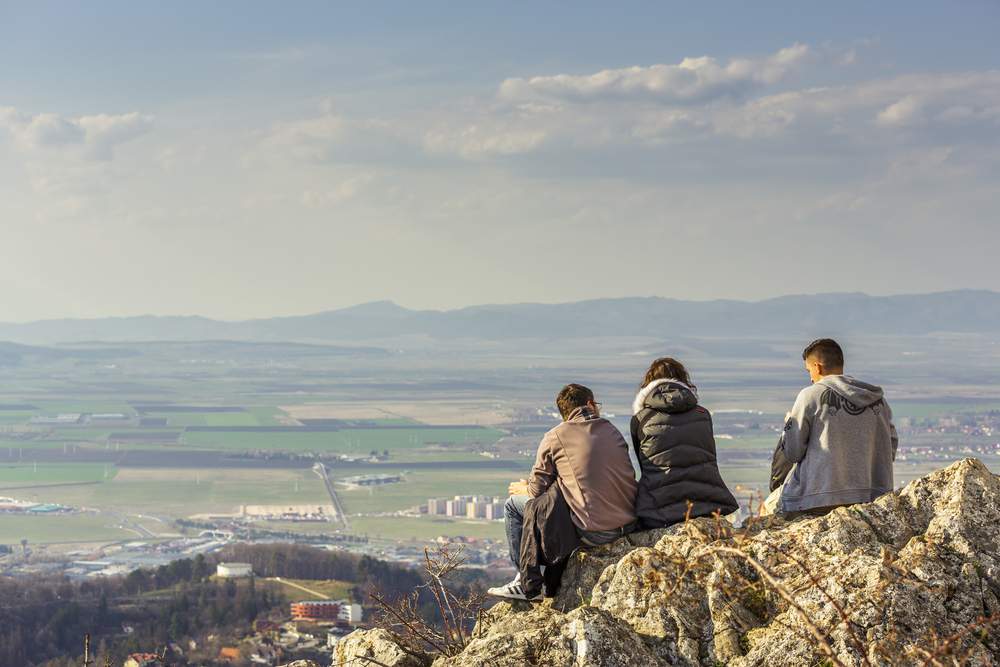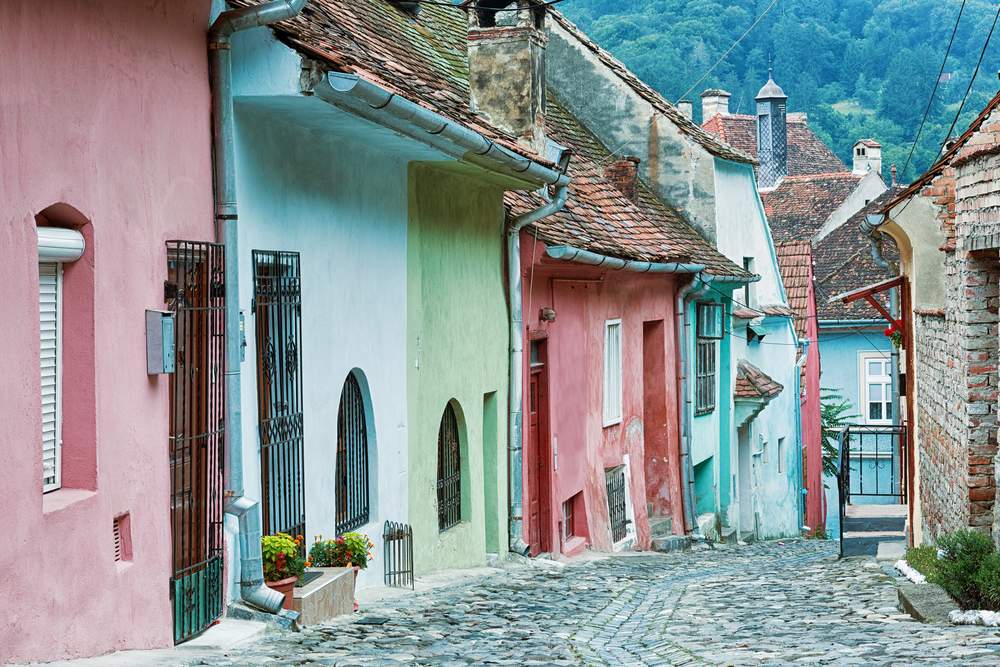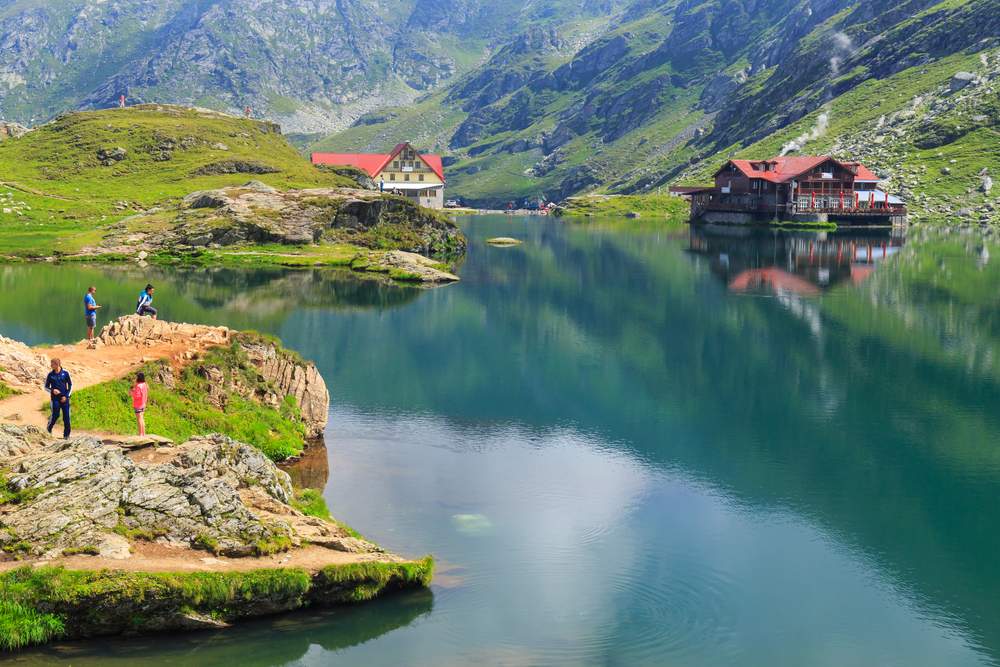When traveling to Romania (or anywhere, really), it’s best to leave behind all prejudice and be prepared for literally everything. There are still some downsides to living in this country, but traveling here is relatively safe and for the most part, highly rewarding.
“When traveling to Romania (or anywhere, really), it’s best to leave behind all prejudice and be prepared for literally everything.”
Consider including
Romania in your European trip plans for wild mountains and genuine local traditions that will sometimes make you feel as if you’ve gone back in time. Keep your eyes open and you’re likely to find extraordinary people and stories that’ll give you
a whole new life perspective.
Here are eight of the most spectacular, must-see places in Romania:
1). Peles Castle, Sinaia

Start your trip in Bucharest, Romania’s capital (served by two international airports), and stop at picturesque
Peles Castle in the city of Sinaia en route to Brasov. Built between 1873 and 1914, this Neo-Renaissance landmark was commissioned by King Carol I and briefly served as the headquarters of the Romanian monarchy. When the Communist regime took over, the castle and its surrounding buildings were turned into a state protocol interest area.
“Reigning over this part of the Carpathians, the Peles Castle consists of no less than 170 rooms and shelters, valuable painting collections, sculptures, expensive furniture elements, and an overall glamorous interior design.”
Today, this national museum is visited by travelers all around the Globe and is considered one of the most elegant castles in Europe. Reigning over this part of the Carpathians, the Peles Castle consists of no less than 170 rooms and shelters, valuable painting collections, sculptures, expensive furniture elements, and an overall glamorous interior design. The entrance fee varies according to the type of tour requested by the traveler. Admission (without a tour) starts at 20 RON. As a quick final tip, it’s far more rewarding to visit the Peles Castle during a hike. Sinaia is the starting point for many remarkable mountain trails, and there’s no better way of relaxing after a cultural tour than taking in the surrounding environment. Bears have been spotted in this area before, so make sure you talk to a ranger before setting off on a hike.
2). Tampa Peak, Brasov

Easy to access by train via Bucharest, Brasov is probably the most captivating large city in Romania. Its medieval charm, narrow cobblestone streets, and relaxed mountain atmosphere make any trip here worth your while. But Brasov is best experienced from above. Tourists usually come here, visit the Black Church and the city center, and are satisfied. But any local will tell you not to miss out on its fantastic panoramic views.
“Brasov is probably the most captivating large city in Romania. Its medieval charm, narrow cobblestone streets, and relaxed mountain atmosphere make any trip here worth your while.”
Just steps away from downtown
Brasov there’s a cable railway gondola that will take you on Tampa Peak (955 meters in height). Position yourself facing the city for the best views. Roundtrip, the experience will cost you about $12USD. Follow the signs towards the Belvedere spot for a clear view of the entire city. Take in the fresh air, and simply enjoy. You can also go on foot, but again, ask rangers beforehand about the bears. It’s no more than a two-hour walk, even for less experienced hikers.
3). Rasnov Fortress

Considered one of the best-conserved rustic citadels in
Transylvania,
Rasnov fortress is located 15 kilometers away from Brasov, near the main road that links it to the city of Campulung. Overlooking the small town of the same name, the citadel has a very interesting history. It was built by the locals in the 13th century as a refuge in case of foreign invasions. Every time Rasnov was attacked, inhabitants would take cover in their citadel.
Today, its charming uneven stone walls and the beautiful surrounding landscape make it an original place to explore. Its complex structure features various towers and two lovely courtyards and the entrance fee is less than $3 USD. A feudal art museum inside the citadel offers insights in the day-to-day life of locals through artifacts with everything from household tools to weapons on display.
Inside the fortress, be sure to peek out of all its hidden small windows for stunning views. For bigger and better views, look through a telescope at the entire valley below the citadel from the observation point.
If you’re planning on visiting Rasnov, keep an eye out for cultural events held here (mostly medieval-inspired).
4). The Medieval Center of Sighisoara

Don’t miss out on a visit to this gorgeous small town in Transylvania. Accessible via direct train routes from Bucharest, Sibiu, Vienna, or Budapest, Sighisoara was built by German craftsmen and merchants during the 12th century over a former Roman settlement.
“If you don’t mind the crowds, it’s worth planning ahead to enjoy the outdoor plays, concerts, dance competitions and art installations.”
Sighisoara’s medieval center is where you’ll probably want to spend most of your time, but the Citadel is easy to reach on foot. Just head towards the churches on the hill.
Visiting Sighisoara in the summer means good weather, street vendors and people in medieval costume. Throughout the warmer months, there are miniature outdoor artist studios at every corner. In July, the local population doubles with the Sighisoara Medieval Festival. If you don’t mind the crowds, it’s worth planning ahead to enjoy the outdoor plays, concerts, dance competitions and art installations (just be sure to make hotel reservations in advance).
Book a hostel in Sighisoara
5). The Transfagarasan Road and Balea Lake

Literally cut through the highest mountains in Romania, the
Transfagarasan road consists of 90 kilometers of twists and turns. The road starts near the city of Pitesti (accessible via Bucharest) and links the historic Romanian regions of Transylvania and Wallachia. Soldiers, under orders by dictator Ceausescu, who wanted military access across the Fagaras mountains in case of Soviet invasions, built the road with 6 million kilograms of dynamite between 1970 and 1974. Forty of them lost their lives to the project.
“Soldiers, under orders by dictator Ceausescu… built the road with 6 million kilograms of dynamite between 1970 and 1974.”
Whether you choose to take the journey to the top by car, bicycle, or motorbike, the dramatic surrounding landscapes are sure to stick with you forever. When you get to the end o the road (it climbs up to 2034 meters in altitude), your reward, Balea Lake, awaits. The second largest glacier lake in Romania it’s surrounded by spectacular mountain peaks. Have a meal or a hot drink at one of the two chalets in the area before you head back. Just be sure to plan your visit in the summer: the road is closed from late October to June due to the inclement weather.
Read 9 of the Most Scenic Drives in Europe
6). The Wooden Churches of Maramures

Often taken for granted nowadays, spirituality in Romania is founded on love, beauty, and simplicity. There is no better way to experience these three virtues than by visiting the legendary lands of Maramures. Here, nature coexists peacefully with people (or people with it) in perfect communion with the traditions of the local inhabitants.
Close to the Ukrainian border, you can get here from the town of Baia Mare, served by an international airport and connected by national roads to major cities like Bucharest or Cluj-Napoca.
Experience Maramures’ heritage visiting its wooden churches, eight of which are protected by UNESCO. Since the inhabitants of these places were not allowed to build strong, long-lasting stone settlements by their foreign rulers, they developed wooden ones, instead. But their works have prevailed for more than four centuries, and travelers can still experience this cultural heritage today. Combine these fascinating spiritual shelters with the striking, peaceful scenery in Maramures, and you’re in for a remarkable escape.
Book a flight to Romania
7). Retezat National Park

The Retezat Mountains in Romania possess two qualities that make them irresistible to hikers all around the world: they’re friendly and spectacular. You can reach them by train and minibus via Timisoara (served by the international airport Traian Vuia).
If you’re not certain you are heading in the right direction, just ask the driver or fellow travelers. There are many people traveling to Retezat from Timisoara in the summer, and almost all of them speak English. The entrance fee is the equivalent of $2US, payable at the Gentiana Chalet on your way up or at the rescue cabin (Salvamont) near Bucura Lake.[section]
[quote]“Rest assured, no one will steal your tent.”[/quote]
[section]Retezat National Park has more than 80 beautiful lakes, hundreds of rare species of flora and fauna, and accessible hiking trails you can follow around the grounds to see it all. To get the most out of your visit, you need at least four days here. Bring your tent, warm clothes, and sleeping bags. Set up camp near Bucura Lake, the largest glacial lake in Romania. From this spot, there are various day trips you can take without having to carry a heavy load. Rest assured, no one will steal your tent.
8). The Sacred Area of Sarmisegetuza Regia

The ancient inhabitants of Romania were called Dacians, an Indo-European people who inhabited the area in and around the Carpathian Mountains. There are few written historical records of the Dacians. That may be why myths and legends are still used fill in the gaps on many of the details regarding this brave and unusual civilization.
“People visiting Sarmisegetuza Regia, near the city of Orastie (in the village of Gradistea Muncelului), at an altitude of 1200 meters, often say they get a strange vibe in the sanctuaries of the former capital of Dacia.”
People visiting Sarmisegetuza Regia, near the city of Orastie (in the village of Gradistea Muncelului), at an altitude of 1200 meters, often say they get a strange vibe in the sanctuaries of the former capital of Dacia. This could be because Sarmizegetusa Regia was the largest fortification of its kind found on the Romanian territory. Its impressive Sacred Area is made up of structures many are still trying to make sense of to this day.
In Orastie, you can ask around for a tour guide for the Dacian ruins. Costs vary a lot–price depends on the guide, the length of tour desired, and your negotiating skills. On the tour, try to experience the energy of the place and get some answers to your questions about the ancient inhabitants. If you let it, a visit to Sarmizegetusa and the old Dacian citadels can take you back in time to a world that didn’t just believe in a spiritual realm, but actually relied on it for day-to-day life.
Read more about Eastern Europe and overland travel:
Travel (like a local) in Guatemala
6 Places in Poland You’ve Never Heard Of
Why You Should Go To Belarus
Photos credits: Shutterstock.com, Mikadun /Shutterstock.com, Photosebia /Shutterstock.com, Mikadun /Shutterstock.com, Photosebia /Shutterstock.com, Dziewul /Shutterstock.com, Dziewul /Shutterstock.com, Anette Andersen /Shutterstock.com, Emi Cristea /Shutterstock.com, Mikadun /Shutterstock.com, Photosebia /Shutterstock.com, Mikadun /Shutterstock.com, ldphotoro







